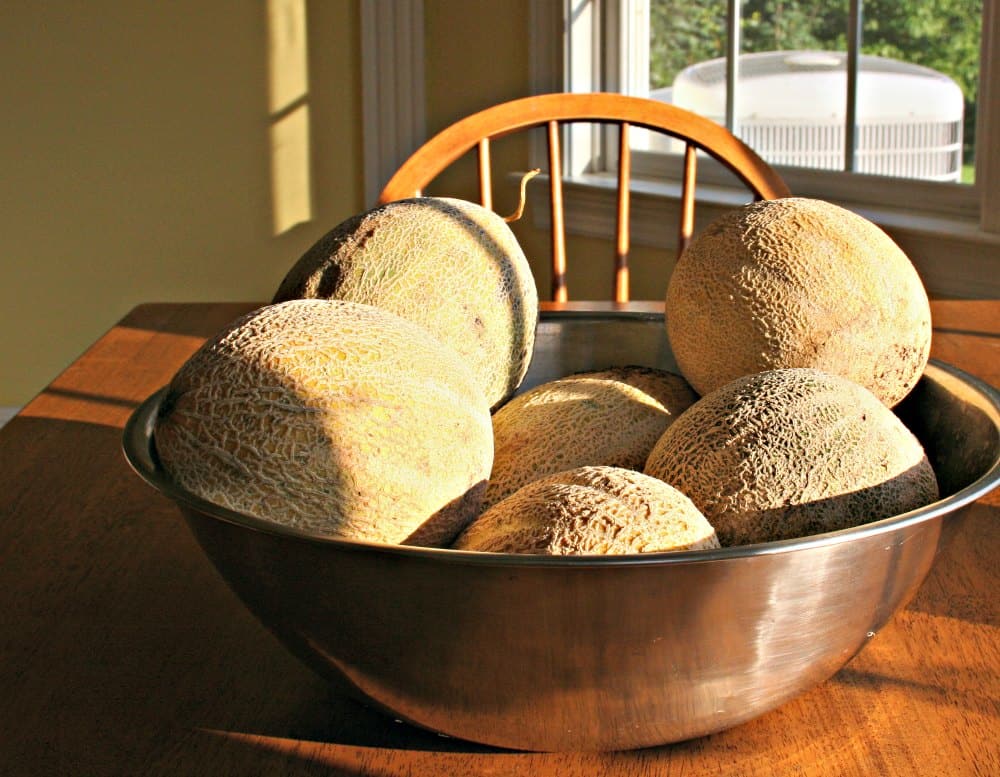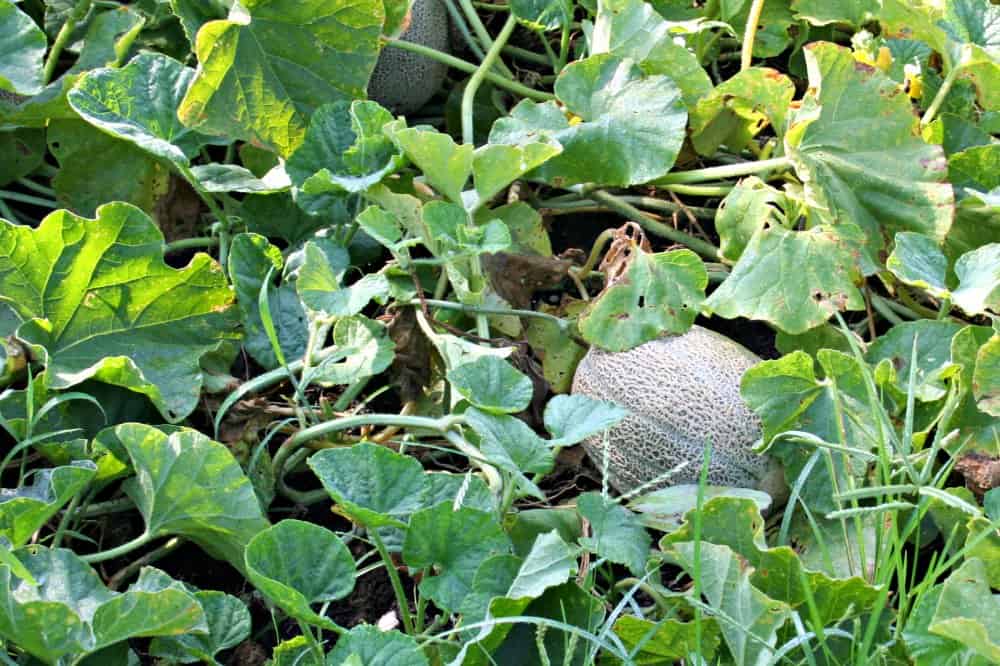Cantaloupe vs muskmelon…which is the proper name for the fruit many of us love? What is the difference? What makes some fruit cantaloupe vs muskmelon? Do they taste different or grow differently?

Surprising Facts About Cantaloupe vs Muskmelon
There are some surprising facts about cantaloupe vs muskmelon.
- All cantaloupe are muskmelon, but not all muskmelon are cantaloupe (confused you more, didn’t I?)
- North American cantaloupe (pictured above) goes by the botanic name of Cucumis melo reticulatus. Reticulatus refers to the pattern of webbing over the skin of the fruit.
- European cantaloupe looks different from its North American cousin. It goes by the Latin or botanical name of Cucumis melo cantalupensis. It is rounder, smaller, and has a light green skin. If you saw it in the market, you wouldn’t call it a cantaloupe, but might ask the grocery what fruit it is.
- Muskmelon is the older name for the fruit, with “musk” a Persian word meaning “perfume” and “melon” a word from old French that means “apple shaped fruit.”
- The European and North American types listed here – the two big categories – are cantaloupes.
- Any variety within Cucumis melo reticulatus or Cucumis melo cantalupensis is a cantaloupe!
It’s proper, in the discussion of cantaloupe vs muskmelon, to call all possible cantaloupes muskmelons and leave it at that.
But really, a cantaloupe by any other name is… a muskmelon.

How Do You Know When a Cantaloups Is Ripe?
All cantaloupes and muskmelons are fun to grow in the home garden. They ripen on or off the vine, but vine-ripened ones are sweeter.
Cantaloupes develop a telltale yellow spot usually on the area where the ribbed skin touches the earth when they are ripe. They develop a sweet fragrance, too, close to the taste of the actual fruit.
I find that the easier they pull from the vine, the more ripe they are. True muskmelon slip from the vine when they are ripe; cantaloupe may cling a bit but with a slight twist or turn of the fruit you can harvest them.
Store at room temperature if the cantaloupe isn’t entirely ripe. Very ripe fruits can be stored in the refrigerator.

Cantaloupe vs muskmelon…they both taste great!




